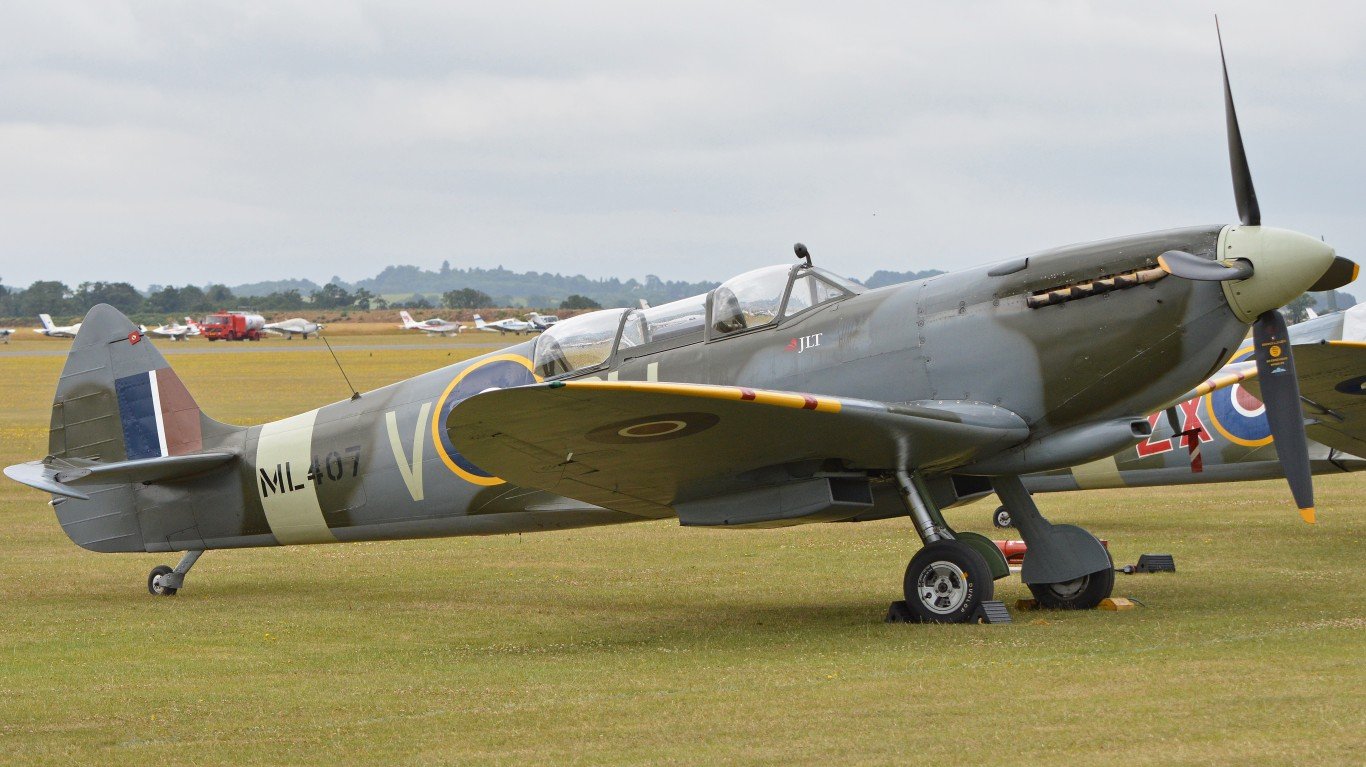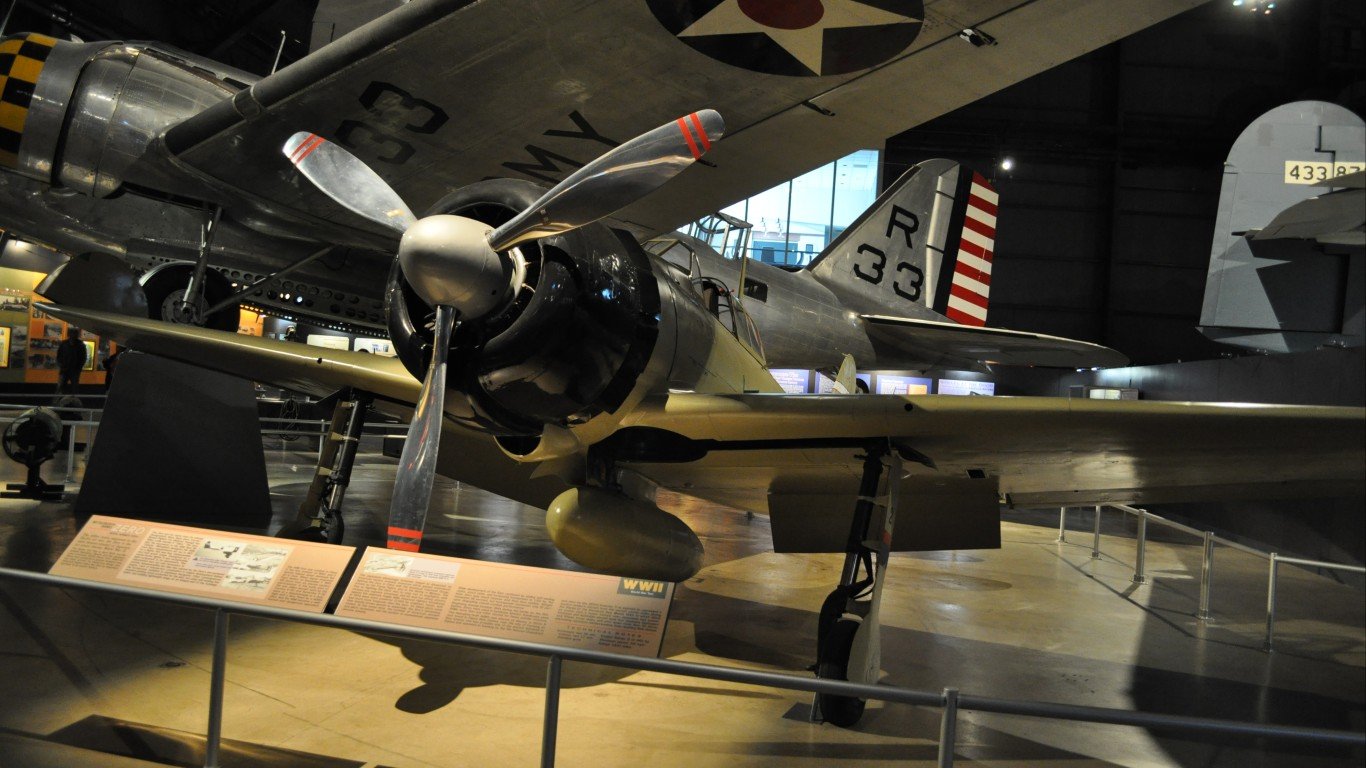Warfare has often been the stuff of legends. These seven legendary fighter planes of WWII and their pilots performed extraordinary exploits that are remembered today. Remember that fighter plane technology and tactics were not far from their infancy. Planes in Word War I were rudimentary and highly experimental. World War II changed all that with new technologies and advancements in speed, armor, weapons, and tactics. Sit back and review these legendary fighter planes of World War II and their pilots and relive a bit of the past.
Erich “Bubi” Hartmann: Bf-109
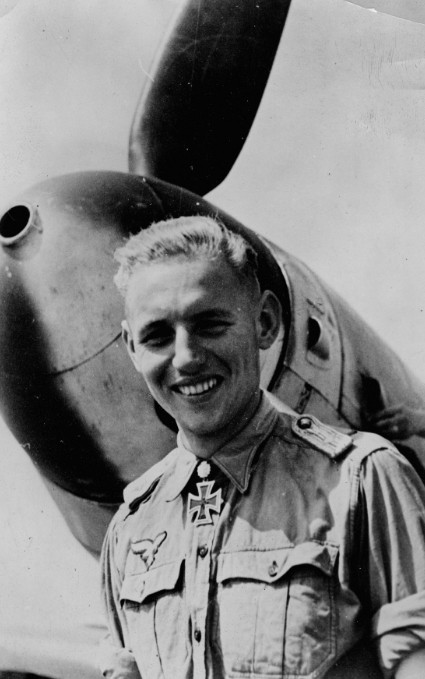
Luftwaffe officer Erich “Bubi” Hartmann is still the most successful fighter pilot of all time, surviving over 1,400 missions and with 352 confirmed kills, primarily on the Eastern Front. (A “kill” in this context means an enemy aircraft was shot down.) Maybe it was in his blood, as his mother was one of Germany’s first female glider pilots. “Bubi” was a nickname he got as a boy, but other flyers tagged him with the moniker “Black Devil” for his ferocity in the air.
The Messerschmitt Bf-109
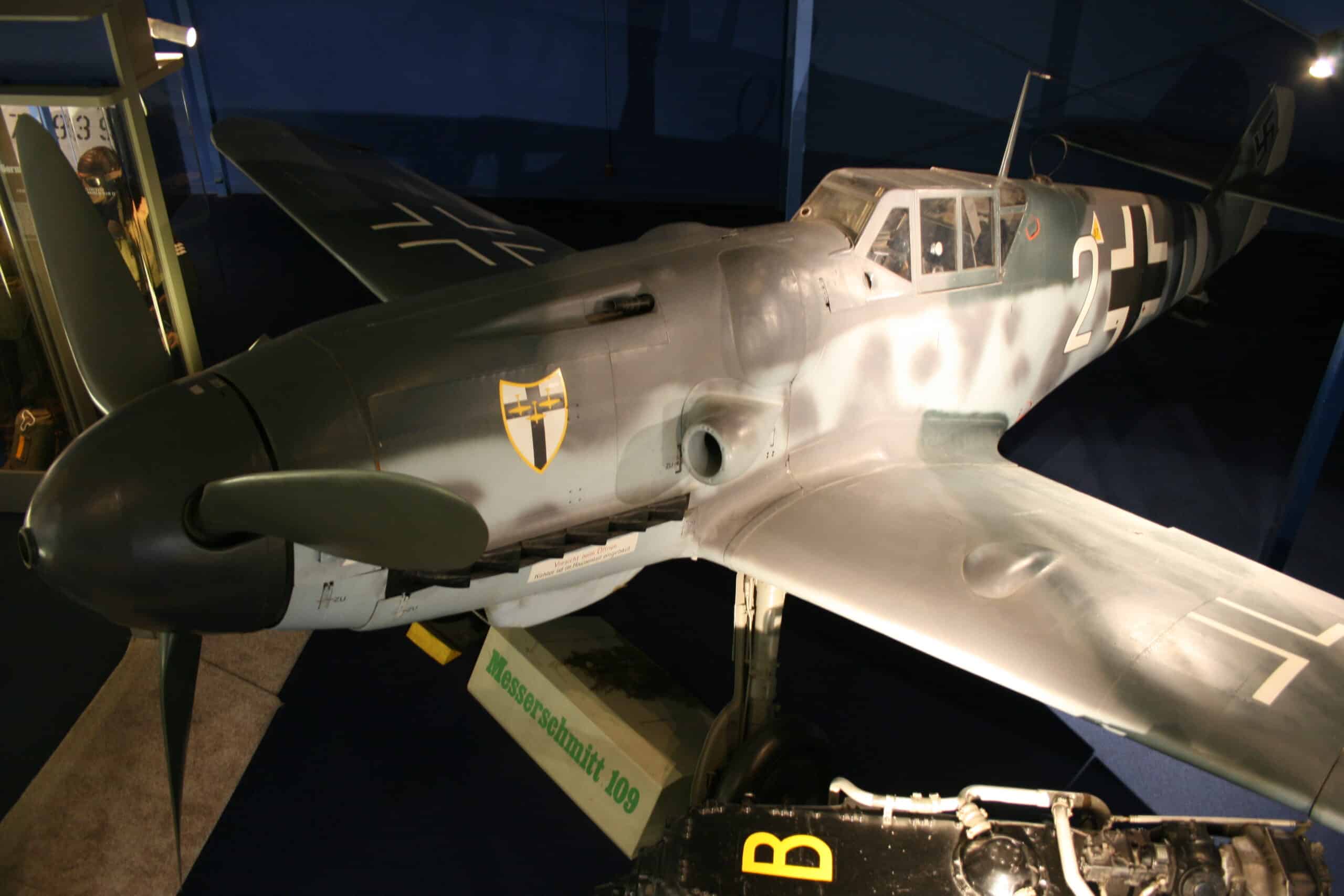
Germany’s most mass-produced airframe in World War II, the Messerschmitt Bf-109 (often called the Me-109 by the Allies), was a veritable backbone of the Luftwaffe. They first saw action in the Spanish Civil War in 1937 and were still in use at the end of the war in 1945. Several variants kept it competitive with newer Allied fighter aircraft. Germany produced a total of 33,984 Bf-109s between 1937 and 1945, accounting for 57% of German fighter aircraft production.
George “Ratsy” E. Preddy Jr: P-51 Mustang

American pilot George “Ratsy” E. Preddy, Jr had already achieved three aerial victories in a P-47 Thunderbolt before reaching a grand total of 26 and five planes destroyed on the ground in a P-51 Mustang. The legendary Chuck Yeager nominated him for the Medal of Honor. Friendly anti-aircraft fire over Belgium downed his plane, and he later died of his wounds.
NAA P-51 Mustang
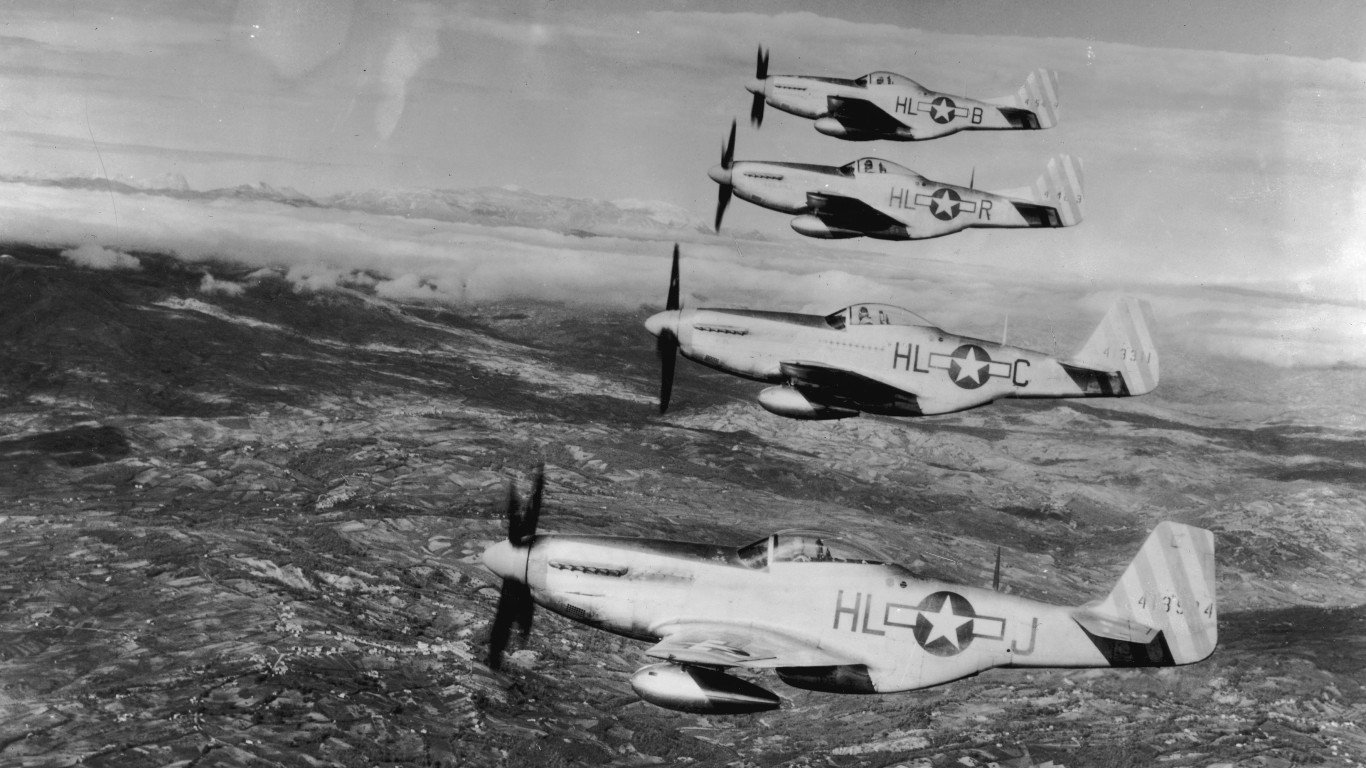
North American Avaiation produced approximately 15,000 P-51s throughout World War II, in four different variants (A, B, C, & D). The Korean War saw many “D” models in action. The British modified the D models with a Rolls Royce Merlin engine for a longer range. Only about 150 of these legendary fighter planes exist today, and fewer are still capable of flight.
James E. “Johnny” Johnson: Supermarine Spitfire

Although official reports conflict, RAF Wing Commander James E. “Johnny” Johnson recorded between 34 and 38 aerial victories in about 700 missions. All his victories were against other fighter aircraft. He missed the Battle of Britain because he needed surgery to correct an injury he received when playing rugby as a younger man.
The Supermarine Spitfire
The Supermarine Spitfire‘s Rolls Royce PV-12 engine propelled it to 360 MPH and 34,000 feet. It was highly maneuverable and agile and very successful against German planes. England produced about 20,341 Spitfires, more than any other World War II fighter plane. It holds a beloved place among the most legendary fighter planes of WWII.
Tetsuzo “Tiger Tetsu” Iwamoto: Mitsubishi A6M “Zero”
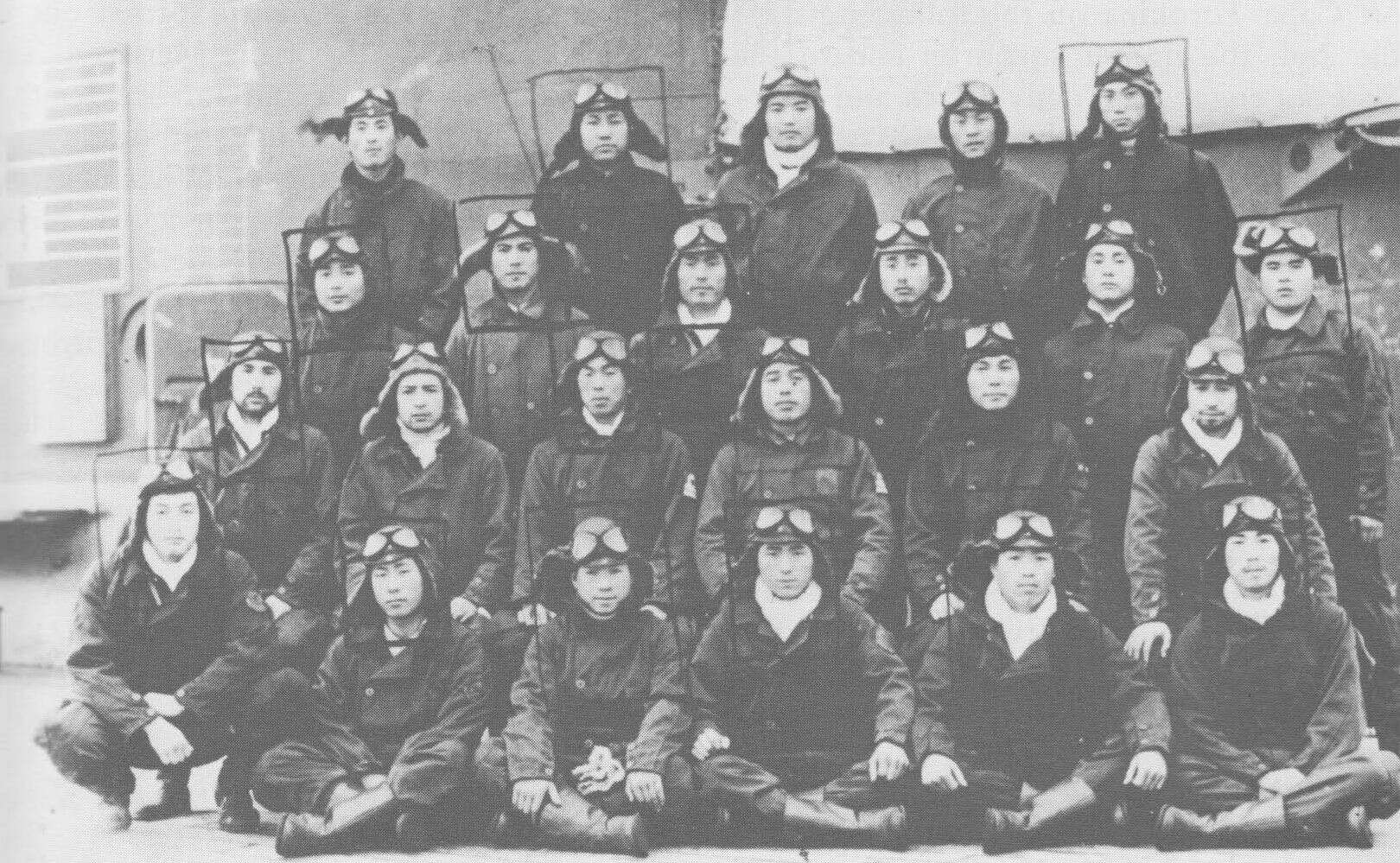
Tetsuzo “Tiger Tetsu” Iwamoto was one of the top-scoring Japanese pilots of WW2. His official record is between 87 and 98 aerial victories in combat. However, his personal diary, found after his death, records 202 aerial victories in the Pacific alone. He also served in China in 1938 and was credited with 14 victories.
The Mitsubishi A6M Zero
Among the legendary fighter planes of WWII, the Mitsubishi A6M Zero holds a formidable place. Racking up a 12:1 kill ratio throughout the war, Zeros could out-turn and out-fly any other carrier-based fighter in the early war years. Japan built approximately 11,000 Zero fighters during the war. They surprised American pilots with their speed, maneuverability, and formidable armament.
Robert S. Johnson: P-47 Thunderbolt “The Jug”
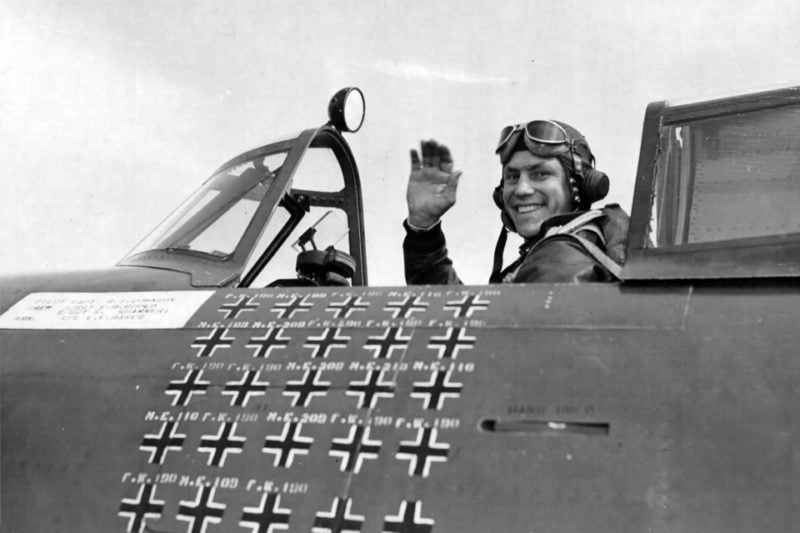
USAAF Fighter Pilot Robert S. Johnson was the first Eighth Air Force European theater pilot to pass Eddie Rickenbacker’s World War I tally of 26 aerial victories with a final total after some official juggling of 27. Johnson flew 91 combat sorties. He also worked for Republic Aviation after the war testing new aircraft designs.
Republic P-47 Thunderbolt “The Jug”
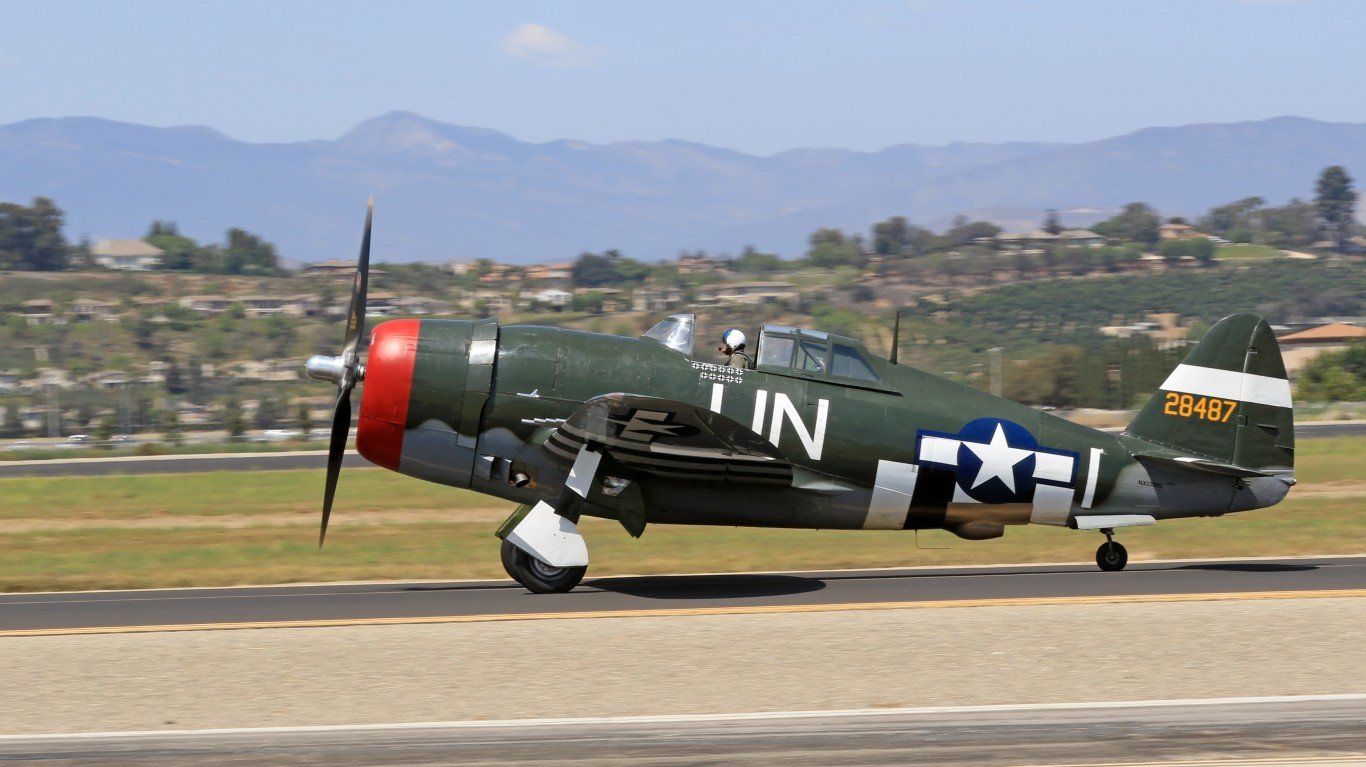
Republic manufactured over 15,600 Thunderbolts during the war. Every theater of combat operations saw them in action. When fully armed, a P-47 could deliver about half the payload of a B-17 Flying Fortress. Its pilots nicknamed it the “Juggernaut” (shortened to Jug) because of its strong design and armor that protected them in combat. It is the heaviest single-engine fighter airplane used during WWII.
David McCampbell: F6F Hellcat
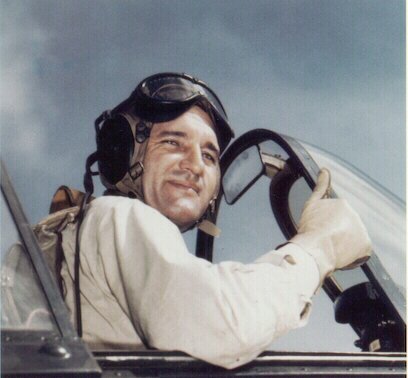
Navy pilot David McCampbell was the highest-scoring ace in the United States Navy and the third-highest-scoring American fighter pilot of World War II. He earned 34 aerial victories and won the Medal of Honor for fighting off a group of 60 Japanese aircraft and shooting down 9 of them in a single engagement.
The Grumman F6F Hellcat

Due to the heavy demands of the Pacific theater of operations, the indomitable Grumman F6F Hellcat went from experimental to operational in only 18 months. Nevertheless, it is responsible for 75% of the Navy’s aerial victories during the entire war. Hellcat pilots like David McCampbell turned in a 19:1 kill ratio, and this was only two years before the war ended.
Otto Kittel: Fw-190
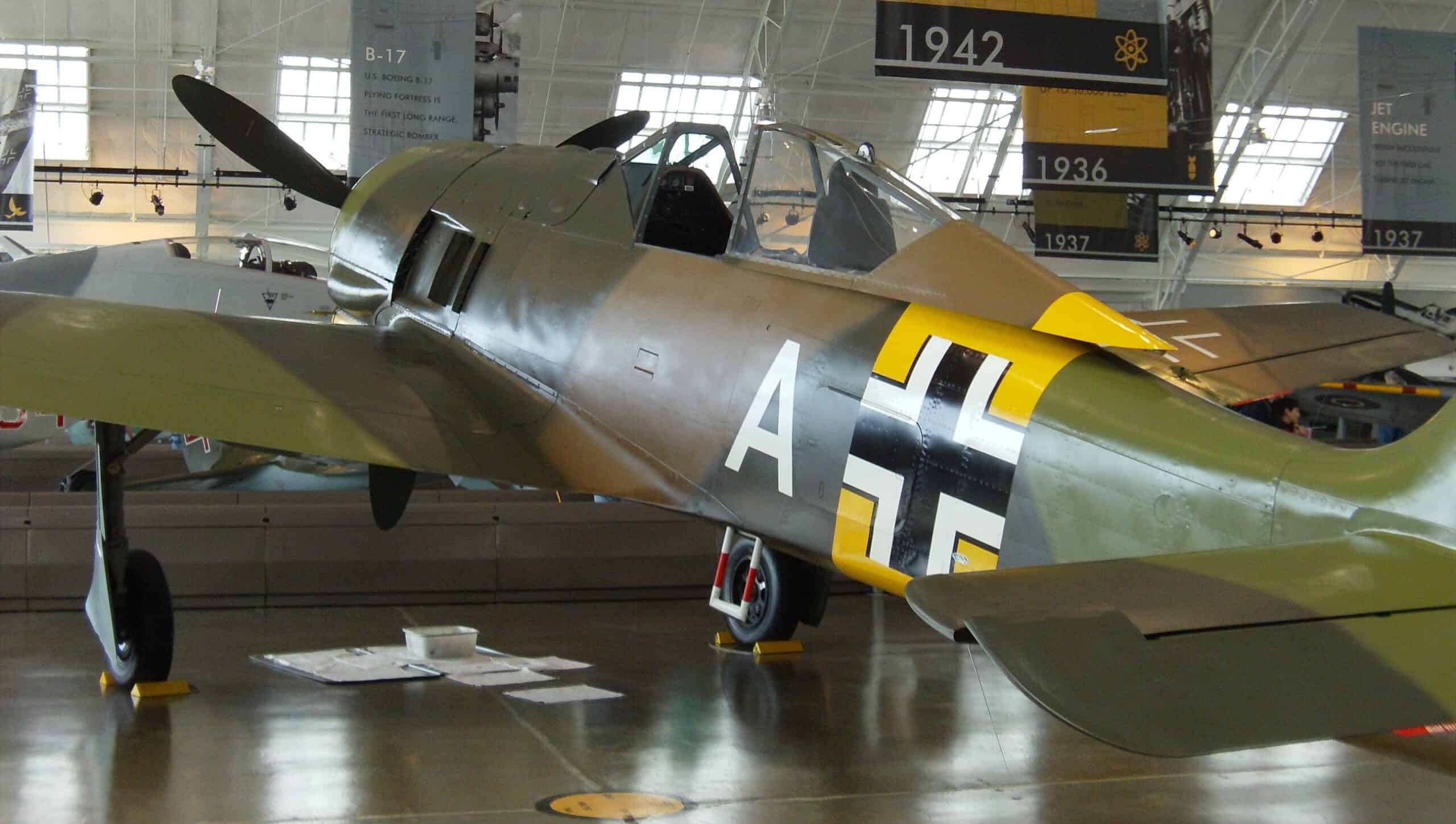
History doesn’t record much about Oberleutnant Otto Kittel. He was one of World War II’s top Luftwaffe fighter aces, earning 267 aerial victories in 583 missions. His entire career was spent on the Eastern Front, and all his victories were against Red Air Force (Russian) opponents. He was eventually shot down in 1945, the most successful German fighter pilot KIA.
The Focke-Wulf Fw-190
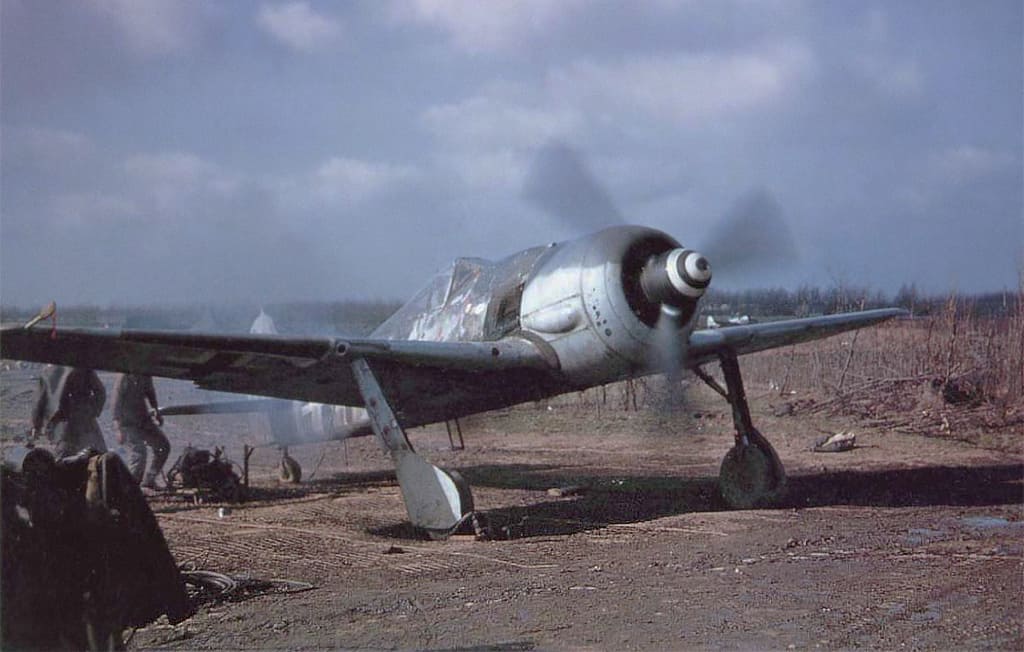
The Focke-Wulf Fw-190 was almost as prolific in production and use as the Bf-109, forming a substantial part of the German Luftwaffe. Its electric landing gear and wing flaps were advanced for its time. It was also the only single-seat radial engine German fighter. Focke-Wulf produced several variants, including some high-altitude models.

